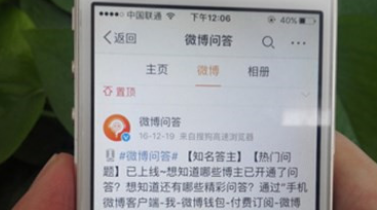
1.Which of the following is NOT a pay-for-answer platform or APP?
A Weibo.
B WeChat.
C Fenda.
D Zhihu Live.
解析:选B。细节理解题。根据第一段第一句Pay-for-knowledge platforms and apps, including Weibo, Fenda and Zhihu Live, have become popular in China. 可知微博、分答和知乎Live都是付费问答平台或应用,只有微信不是,故选B。
2.Who can get the money paid by the people wanting to know the answer?
A The knowledge platform.
B The people answering the question.
C The people asking the question.
D All of the above.
解析:选D。细节理解题。根据第三段最后一句The income would be shared between the platform, Wang and the question raiser, according to rules set by the platform.可知想知道答案的网友的付费由平台、答题者和提问者共同分享,故选D。
3.How many people saw the answer given by Wang Sicong?
A 5000.
B 8000.
C 10000.
D 18000.
解析:选D。细节理解题。根据第二段第二句However, Wang’s answer attracted more than 180,000 internet users, wanting to see the response, who each pay 1 yuan.可知有18000个人想知道王思聪的答案并付费,故选D。
4.Which of the following word can replace the underlined word “translate”?
A Become.
B Take.
C Change.
D Make.
解析:选C。词义猜测题。根据上下文可知这些名人可以通过自己的知识和名气赚钱,因此是把名气变成钱,D选项只有赚钱的意思,没有变成钱的意思,故选C。
5.What caused the price to rise for the answers from the famous people?
A The platform model.
B Higher demand than supply.
C Their great number of followers.
D That more people asked questions online.
解析:选B。推理判断题。根据第五段第一句Yang Lu, the co-founder of Fenda, said the price was dependent on supply and demand.可知价格是由供需关系决定的,只有需大于供的时候价格才会上涨,其它选项都是对供需关系的片面描述,没有抓到关键点,故选B。